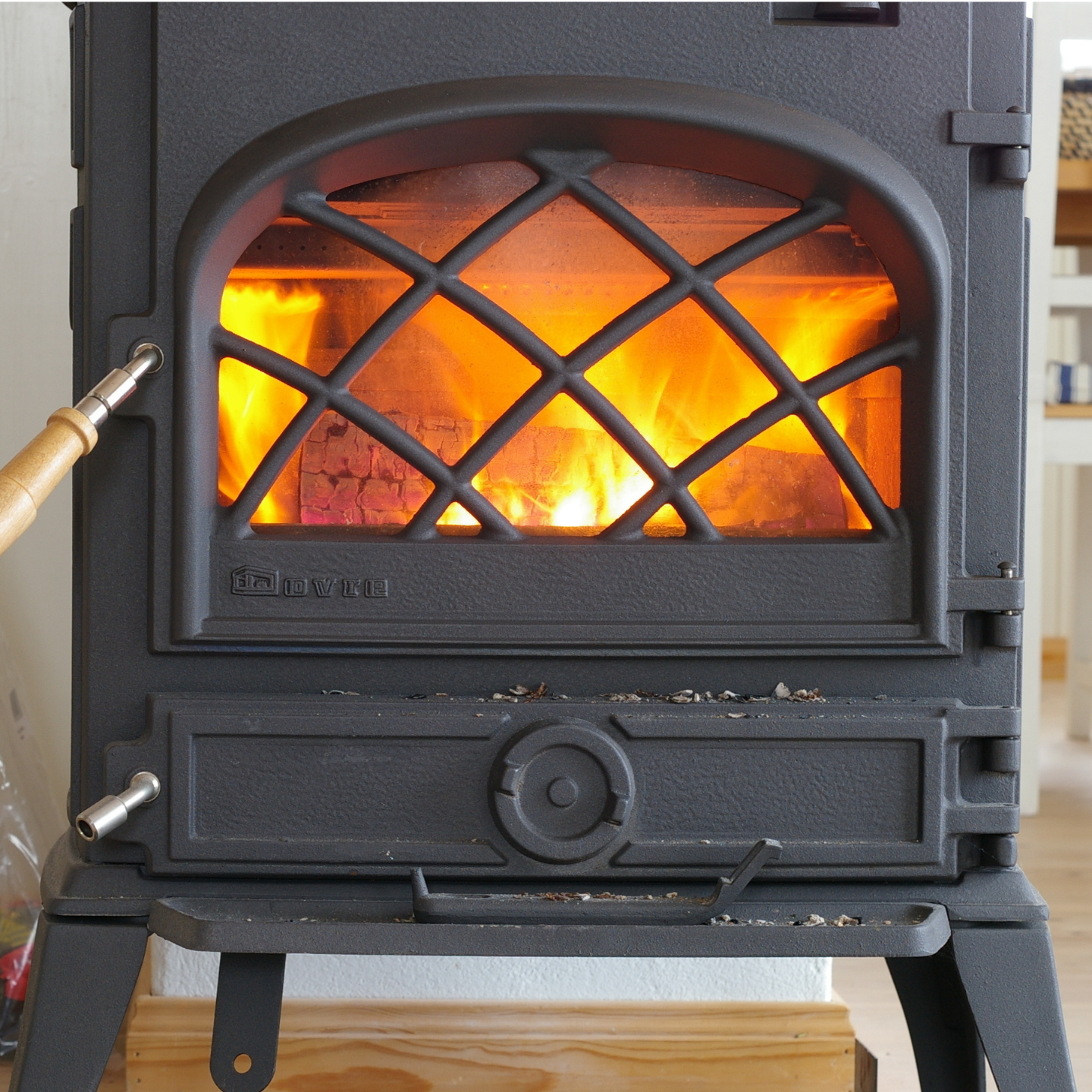During the chilly fall and frigid winter months, staying warm and cozy in
your log cabin is a top priority. With the right heat source for your living
space, you won’t have to bundle up in multiple layers, and your teeth won’t
be chattering from the indoor cold.

Consider These Small-Space Heat Sources
Most log cabins contain a heating, ventilation, and air conditioning (HVAC) ystem that provides multi-season comfort. Besides electric heat, fuel sources include propane, natural gas, and heating oil.
You can also consider wood-burning heat sources such as wood stoves or fireplaces.
For the purposes of this post, we’re going to discuss electric, propane, and gas heating options.
If you’re just building your log cabin, or you’re considering an additional heat source, look at the nature of the cabin. If it’s primarily a summer-season home, or doesn’t have much square footage, one of these lower-priced options may do the trick.
1. Direct Vent Wall Furnace
If you have a smaller log cabin, consider heating it with a direct-vent wall furnace. This self-contained heating system provides heat to a defined area.
Choose from gas or electric models, both with built-in safety features and a thermostat. If you opt for the gas version, get a professional to install the gas line.
2. Portable Heating Unit
If you’re heating a smaller cabin, or a single room, a portable heater is always a good choice. Newer units have lots of safety features. Big box and online stores should have models that will blend nicely with your cabin décor.
Evaluate Two Larger-Space Heating Options
If your larger cabin requires a new heat source, consider two systems with relatively straightforward installation methods. For the best outcome, call in a professional with the knowledge and proper equipment.
1. Ductless Mini-Split Heating System
If your log cabin lacks a ductwork system, and you don’t want to install one, a ductless mini-split heating system may work for the entire cabin or an extra area (or two). These systems use multiple air handlers, with each handler installed in its dedicated service area.
The air handlers are connected to an exterior heat pump. When they’re properly installed, a single system can effectively service several parts of your cabin.
2. High-Velocity Forced Air Heating System
These systems do incorporate ductwork, but it’s considerably smaller than the ducts in traditional forced air systems. Consider this super quiet system that won’t keep you up at night.
Tips to Increase Your Log Cabin’s Heating Efficiency
Regardless of your heating system, it needs help to operate at maximum efficiency. Here are two easy-to-follow tips that should enable better system performance.
1. Increase Your Log Cabin’s Insulation
Add insulation to your log cabin’s walls, attic, and basement. Applying foam board and/or spray foam will help to keep heat from escaping into the great outdoors.
2. Purchase a Smart Thermostat
These programmable digital thermostats are worth their weight in gold. You can control each room’s temperature separately rather than heating the entire house.
When everyone’s out for the day (or on vacation), set the thermostat to a lower temperature. And, you can easily control the smart thermostat with your smartphone. With just a few simple adjustments, you’ll see real dollar
savings over time.

Leave a Reply